Street art and mural paintings are mushrooming, and have become one of the biggest attractions on the island’s south. We sat down with a Denpasar-based, famed street artist, visited the capital’s art institution, and snapped some of the island’s most staggering mural paintings.
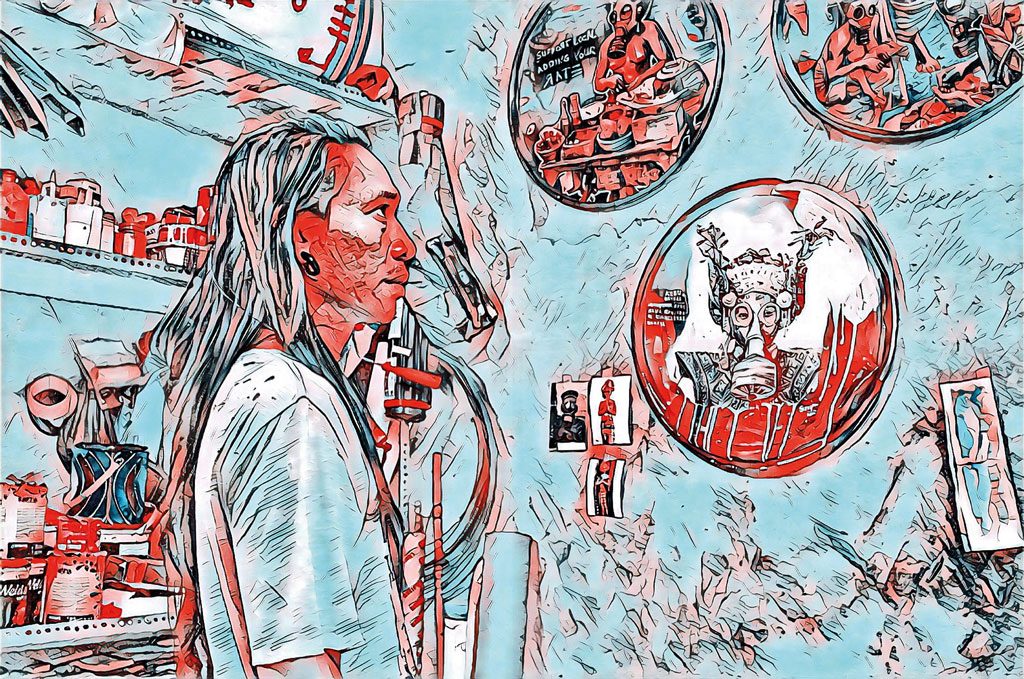
the street artist
As his stage name suggests, Slinat (short for “silly in art”) in a lot of his art works plays with silliness that’s currently happening on his home island due to over commercialism and capitalism. His work is raw, impressive, extreme and touching whereby he tests the borders of the graffiti world, the street art scene and the taste of the viewers.
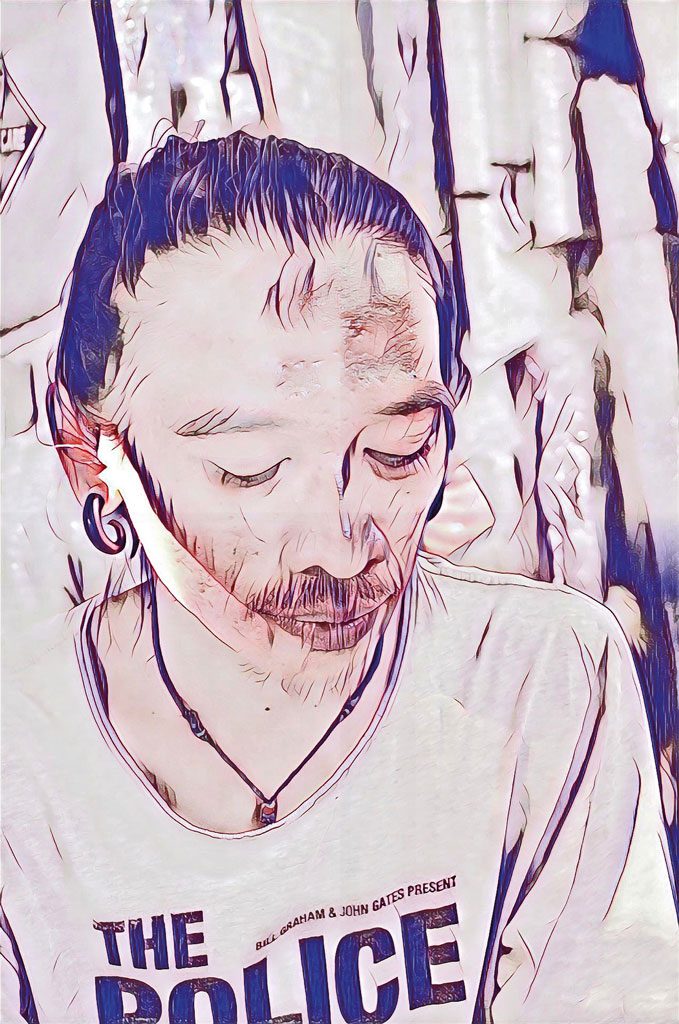
The Balinese street artist is known for his public works on the public walls, portraying his confrontational, provocative, and at times humorous thoughts. Those who understands his art, see that there is a large dose of parody in it.
In his signature graffiti, where he portrays Balinese women in their traditional attire wearing a gas mask, Slinat is criticizing the over commercialism and capitalism, the mix-bag tourism projects that have ‘polluted’ the traditional Bali. In his words, Slinat explains that “Bali has certainly changed especially in the midst of the current tourism boom. But what I feel very sorry for is that the Balinese people themselves are starting to take their own age-old traditions for granted. For example, a lot of the old Balinese Hindu temples that have been recently refurbished are missing the historical and traditional values. Instead of fixing what needs to be fixed, they tear down and rebuild everything.”
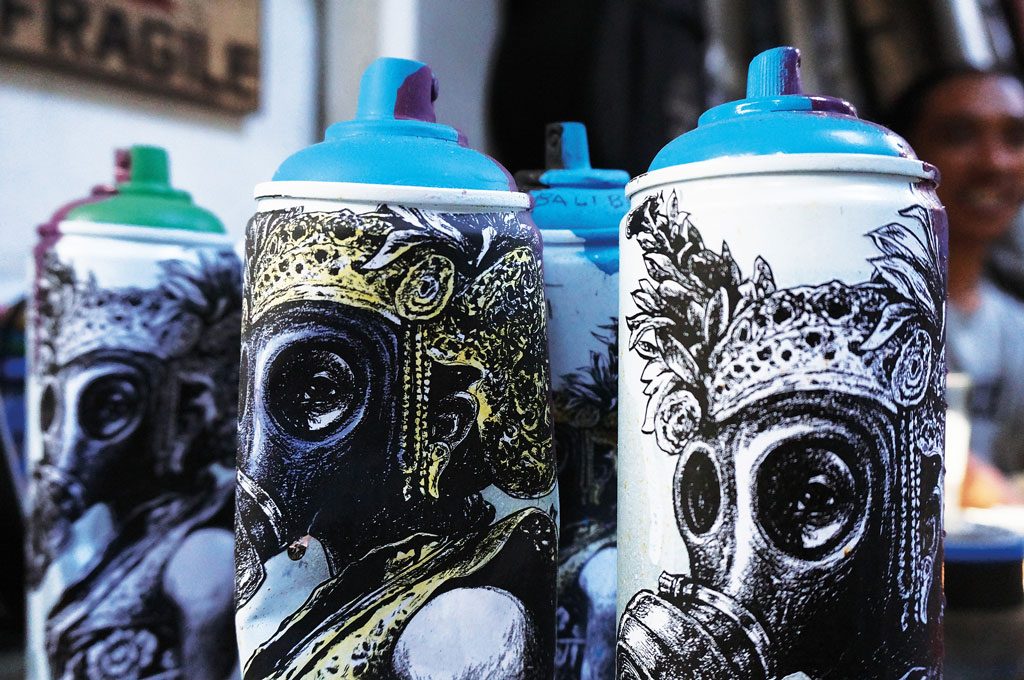
“The same thing also happens with the construction of Balinese gates; they used to bear intricate, detailed carvings that tell a story and represent the unique style of a particular region in Bali. Now, they only use plain red bricks. The funny thing is, the old ruins that get written off by the Balinese are collected by villa/resort owners to decorate their properties. So it feels sacred at the villas, and touristy at the temples,” Slinat continued explaining.
Slinat also regrets the behavior of many visitors that objectify the Balinese people. “Many tourists see the Balinese people as great photo objects. And this can be disrespectful at times, especially when these visiting people snaps the photos right in front of praying Balinese at the temples. I’m actually okay with the tourists taking photos of the Balinese people as long as it’s done respectfully. With that being said, these visitors shouldn’t take the photos of the people, but learn about them instead; because the Balinese people they photograph can be a painter, carver, or dancer. I think it shows deep appreciation when you learn about the people, not just take the photos.”
To view some of Slinat’s mural paintings, you can go Badung Market in Denpasar, or check out his instagram account @slinat and @artofwhatever.store.
the art institutions
Visiting Bali’s art institutions provide a lovely experience that can serve to give foreign visitors a deeper appreciation of just how seriously and totally dedicated the Balinese are to their art.
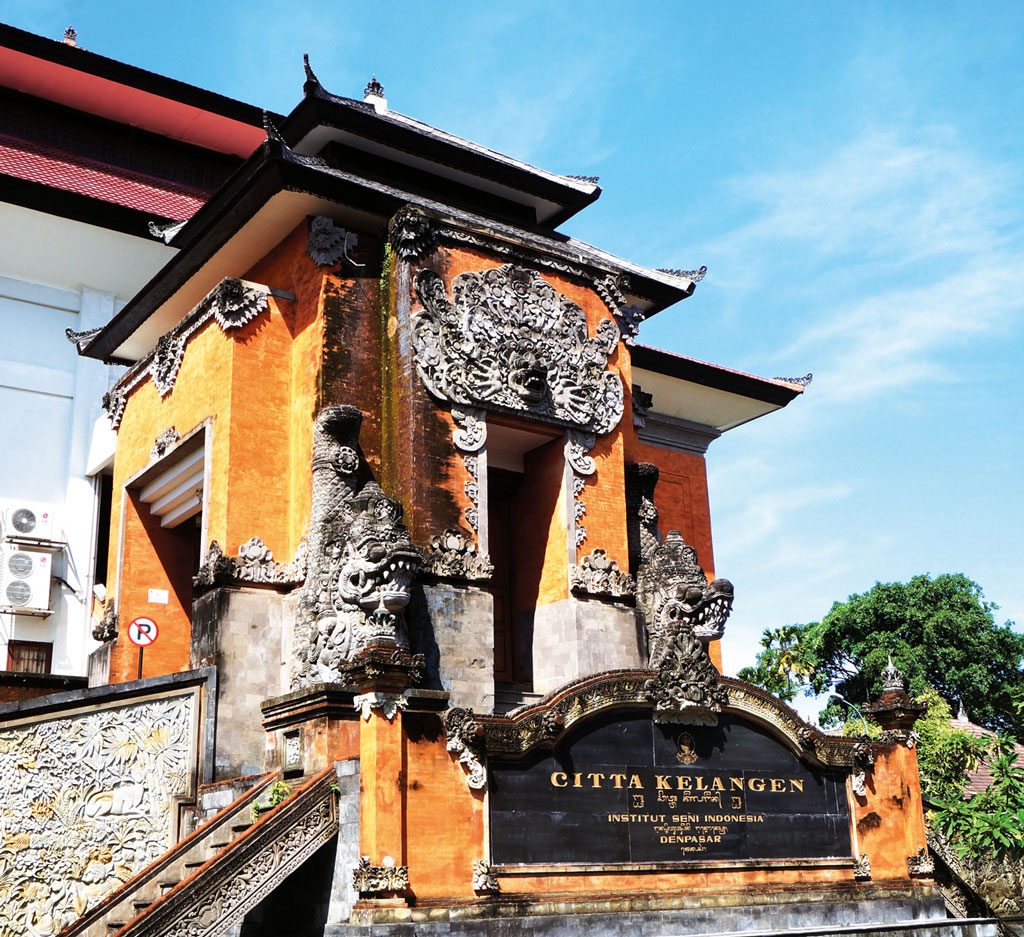
On the outskirts of Denpasar, an institution offers its students arts classes is SMKI (high school level) in Batubulan near Sukawati. Founded by I Wayan Balik Riti, this institution is dedicated solely to the teaching of Balinese sculpture. It was soon accredited into the public school system and it has grown steadily ever since. One faculty (SMKI 1) offers intense courses in wood sculpture, metal crafts, ceramic works and batik making; a second faculty (SMKI 2) offers professional training in Bali-style oil painting; and a third faculty (SMKI 3) trains youngsters in playing the various gamelan instruments and the subtlety and nuances of the classic dances of Bali.
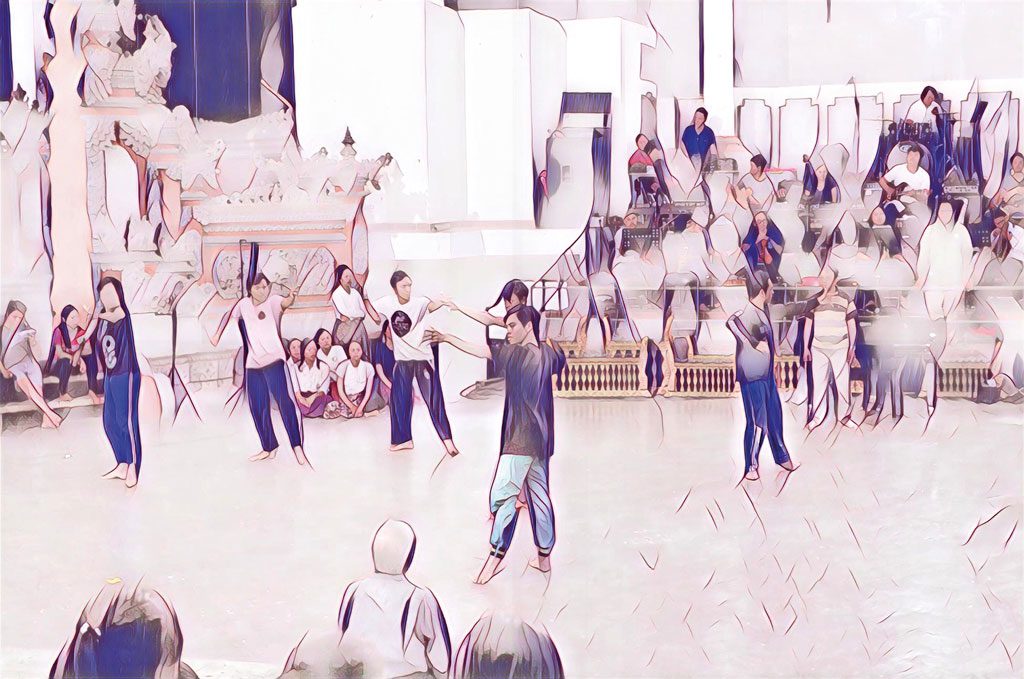
Here, there are chances that you will be seeing happy teenagers sitting on the lawn, shaping their skills on oil painting and charcoal sketching. These kids would use their peers to pose for them or use one of the statues in the campus’ yard as their models. Normally the teachers will encourage visitors to have a closer look so that they can appreciate these future artists as they are doing their early works. In the main room of the music school, visitors could watch a rehearsal of an orchestra comprised entirely of traditional Balinese instruments. The teacher/director will be sitting in front while enthusiastically waving his baton with all the energy. At the dancing school, the class when in session is filled with scores of Bali’s loveliest teenagers all moving gracefully to the direction of the instructor.
The students paint, dance and carve as if they love it; and it is very obvious that they do. The campus of this school is a fascinating place and, as a tourist, you are welcome to visit, observe and take a reasonable number of photos, as long as it’s done discreetly and there’s no disturbance to the students caused by your presence. If you feel like joining any of the classes offered in this school during your holiday, you can visit the Head Master’s office for details and applications.
In Denpasar, the university level Indonesian Institute of the Arts Denpasar (ISI) is based on cultural values and provides degrees related to the art industry. Offering courses such as Dance, Drama and Music, Puppetry Art, Fine Arts, and Art Craft, the institution’s produced some of the island’s most talented artists, including street artists. And though not as ‘open’ as the SMKI in Sukawati, visitors can still come and pay a visit to the ISI campus and interact with the students – they’re very friendly people.
the works of art
Contemporary bubble tags, murals and conceptual pieces continue to evolve graffiti in Bali, while building and gallery owners commission both renowned painters and new luminaries — a far cry from the days of sneaking through the night in search of unclaimed tile.
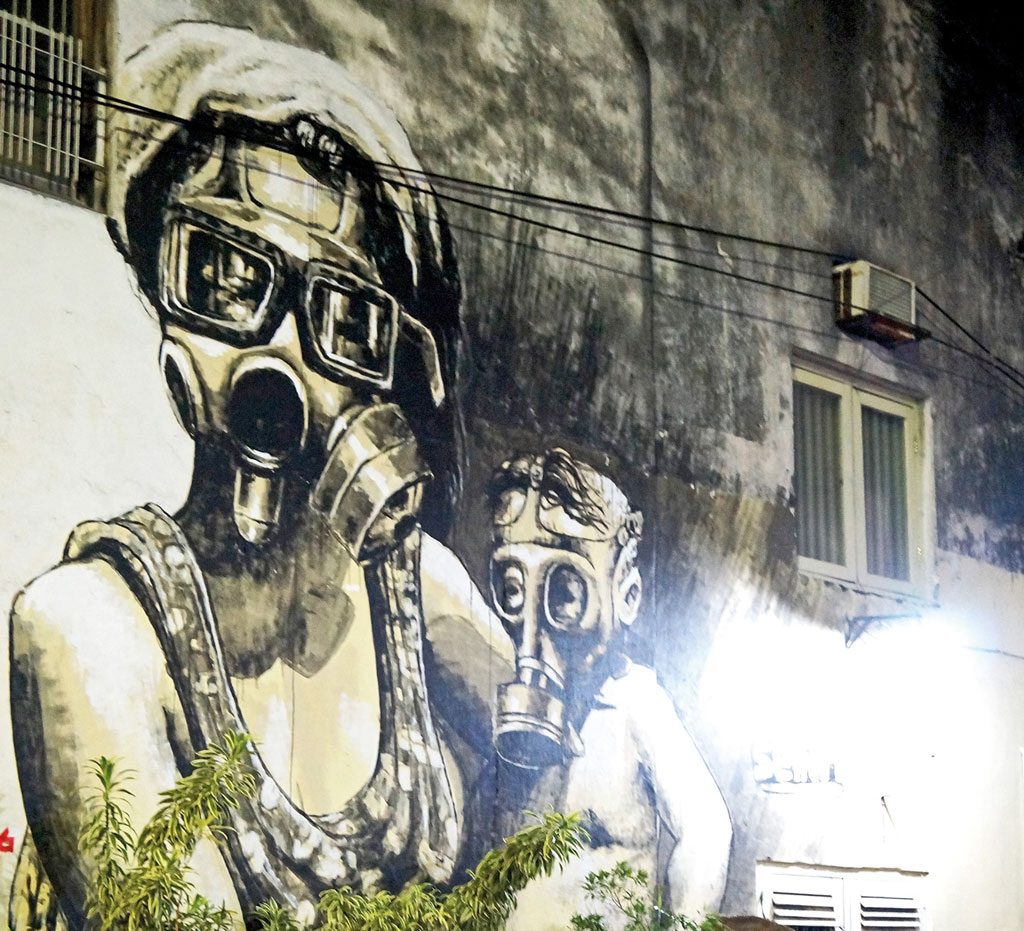
In Denpasar, you can view some of the most staggering, tens of foot high murals on the island, such as the one in Badung Market as pictured here.
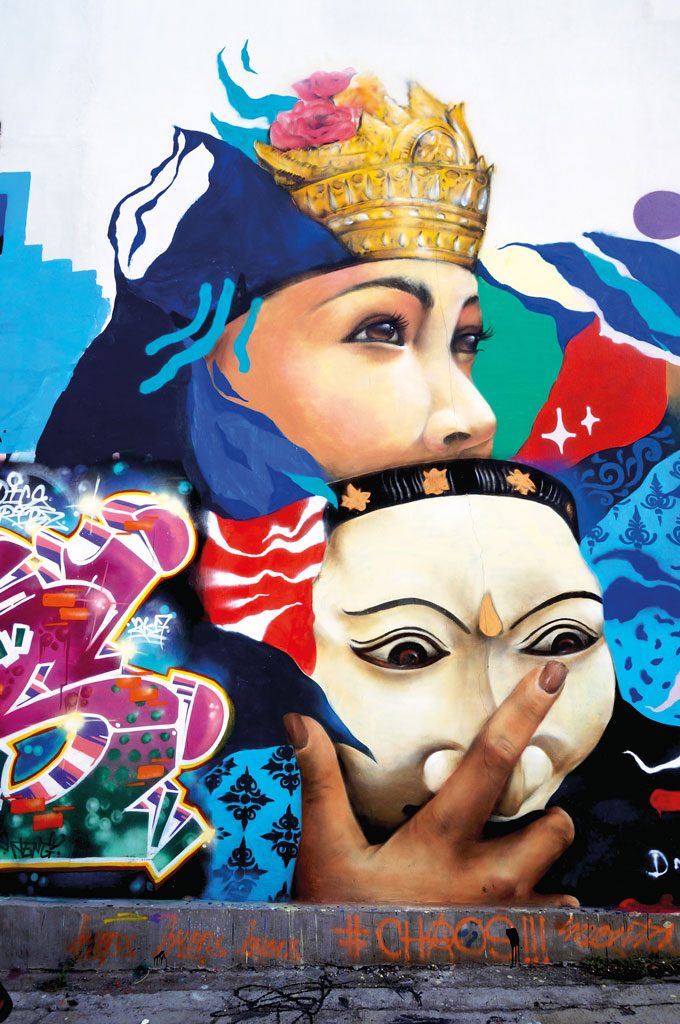
In Canggu, ALLCAPS provides a very spacious outdoor gallery with a great collection of impressive murals sprayed and painted on the walls of actual homes. The indoor gallery displays the works of both the island’s finest and visiting street artists. ALLCAPS organises regular Spray Jams and social events to support the local street art scene in Bali and the local artists. They also take pride in helping visiting artists to make the best out their creative holidays by connecting them with local artists or by directing them to the right spots.
ALLCAPS Graffiti Shop & Gallery
A : Jalan Raya Canggu 18A, Canggu
T : +62 812 3969 3889
W : www.allcapsstore.com










